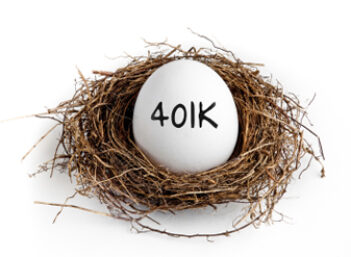Too often, we spend so much time saving up for retirement that we give little thought to what we should do with our money during retirement.
And the idea of just changing your asset allocation to favor bonds over stocks during retirement doesn't amount to a true investing plan.
You want your money to work for you after you retire. Retirement buckets may be your solution.
Let me explain...
Keep Growth in Your Portfolio
When you take a more traditional approach to your retirement portfolio, you have the growth phase, which happens before you retire, and the income phase, when you draw down your account to pay for your retirement lifestyle.
There isn't much focus on growth once you retire. Retirement buckets can help you put a little more growth back into your portfolio, allowing you to add to your wealth even though you are retired.
Set Up Your Retirement Buckets
With the retirement bucket strategy, you divide your portfolio into three areas, or buckets, depending on when you will need the money:
- Short-term: You draw from this bucket right now. You keep more liquid assets here, maintaining your lifestyle. Keeping cash products in this bucket, as well as a few of the least risky income assets, can ensure that you have the money you need to live. This is the bucket that you are mostly likely to draw down.
- Medium-term: You hold money you will need in six to 10 years in this bucket. It's for solid, reliable investments. Dividend stocks (I like the idea of using DRIPs to keep the growth going) and fixed income investments can be beneficial in this bucket. Your money has the potential for modest growth in this bucket, but it's not in anything unduly risky.
- Long-term: Here is money that has time to grow and overcome market setbacks. You won't need this money for at least 10 to 15 years. You can include riskier assets in this bucket, since there is a chance losses will be recovered. This portion of your portfolio is meant to grow (alongside the medium-term's more modest potential).
After setting up your retirement buckets, it's possible to 'pour' your money from one to another.
Move Your Assets Between Buckets
As you draw down your first bucket, replenish it from your second bucket. What are your retirement goals, and how much money will you need each month to maintain your lifestyle? This will help you know when to move your assets.
When you need more assets, sell some of the solid assets from your second bucket and put the money into the assets that fill your first bucket. In some cases, if you feel confident about your dividend stocks, this might merely mean quitting the DRIPs and taking the dividend payouts rather than reinvesting them.
As you pour assets from your second bucket to your first, sell the riskier assets in your third bucket and buy more stolid assets to replenish your second bucket.
If you get a system going, it is possible to keep drawing on your first bucket, while the assets in your second and third buckets keep growing in a way that can help you extend the life of your portfolio.
The Investing Answer: Investing shouldn't stop just because you've reached retirement. There are still opportunities for growth. Divide your portfolio into buckets, and you will be able to better manage your investment income in a way that decreases the chance that you will run out of money.



